Serving 527 students in grades Prekindergarten-8, Lee K-8 School ranks in the bottom 50% of all schools in Massachusetts for overall test scores (math proficiency is bottom 50%, and reading proficiency is bottom 50%).
The percentage of students achieving proficiency in math is 3% (which is lower than the Massachusetts state average of 41%). The percentage of students achieving proficiency in reading/language arts is 8% (which is lower than the Massachusetts state average of 44%).
The student:teacher ratio of 9:1 is lower than the Massachusetts state level of 12:1.
Minority enrollment is 95% of the student body (majority Black), which is higher than the Massachusetts state average of 47% (majority Hispanic and Black).
Quick Stats (2025)
- Grades: Prekindergarten-8
- Enrollment: 527 students
- Student:Teacher Ratio: 9:1
- Minority Enrollment: 95%
- Overall Testing Rank: Bottom 50% in MA
- Math Proficiency: 3% (Btm 50%)
- Reading Proficiency: 8% (Btm 50%)
- Science Proficiency: ≤5% (Btm 50%)
- Source: National Center for Education Statistics (NCES), MA Dept. of Education
Top Rankings
Lee K-8 School ranks among the top 20% of public schools in Massachusetts for:
Category
Attribute
Percent Eligible For Free Lunch
Student Attention
School Overview
Lee K-8 School's student population of 527 students has declined by 19% over five school years.
The teacher population of 56 teachers has declined by 6% over five school years.
Grades Offered
Grades Prekindergarten-8
(offers virtual instruction)
(offers virtual instruction)
Total Students
527 students
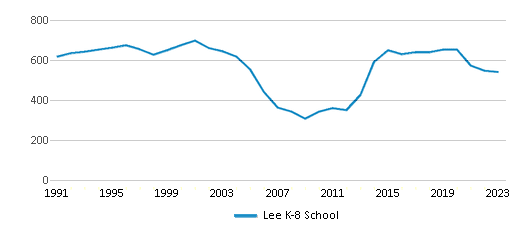
Gender %
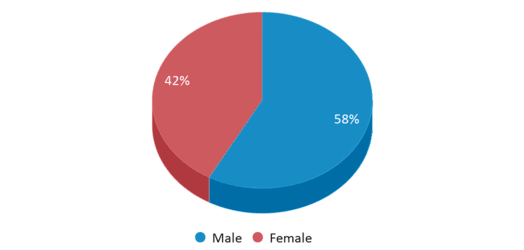
Total Classroom Teachers
56 teachers
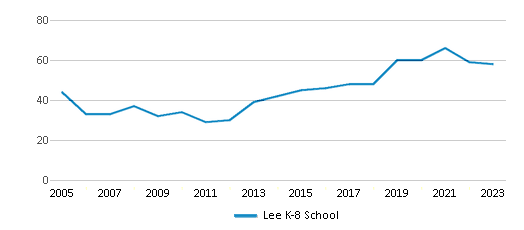
Students by Grade
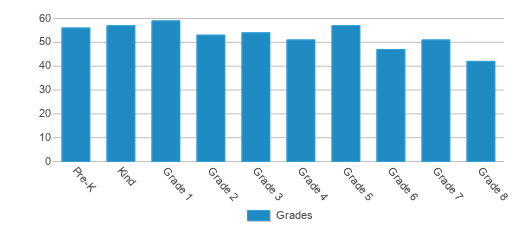
School Rankings
Lee K-8 School ranks within the bottom 50% of all 1,631 schools in Massachusetts (based off of combined math and reading proficiency testing data).
The diversity score of Lee K-8 School is 0.61, which is less than the diversity score at state average of 0.65. The school's diversity has stayed relatively flat over five school years.
Overall Testing Rank
#1628 out of 1631 schools
(Bottom 50%)
(Bottom 50%)
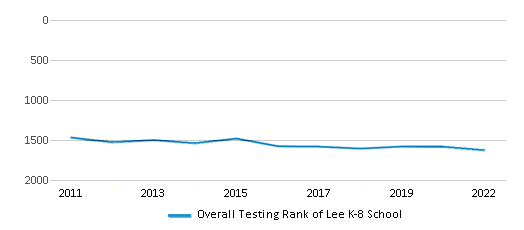
Math Test Scores (% Proficient)
3%
41%
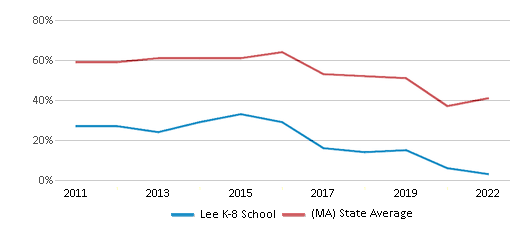
Reading/Language Arts Test Scores (% Proficient)
8%
44%
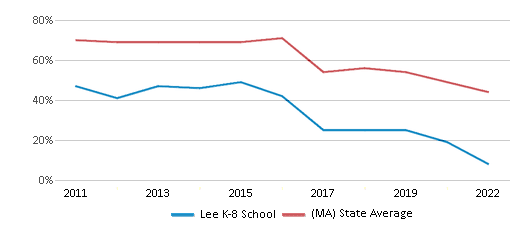
Science Test Scores (% Proficient)
≤5%
44%
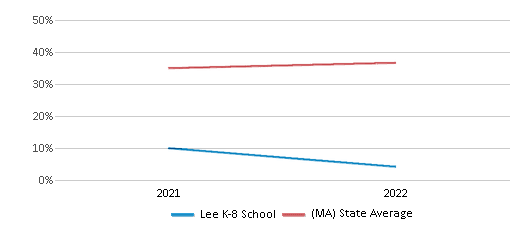
Student : Teacher Ratio
9:1
12:1
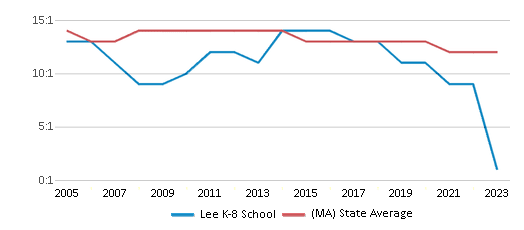
American Indian
1%
n/a
Asian
3%
7%
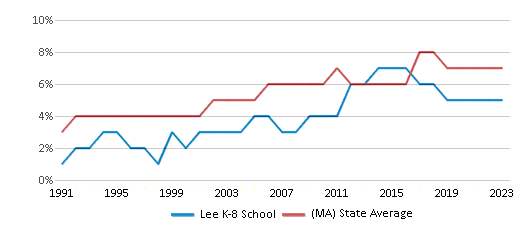
Hispanic
37%
25%
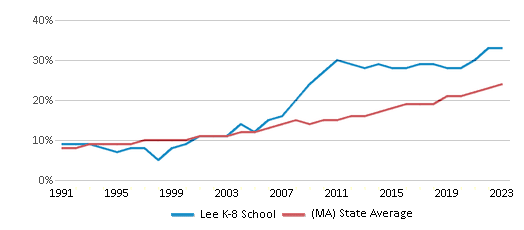
Black
50%
10%
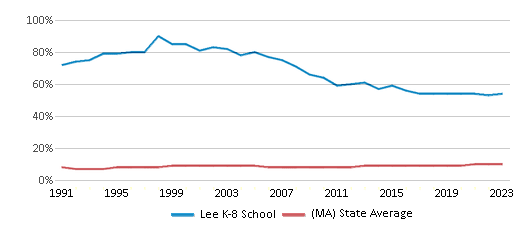
White
5%
53%
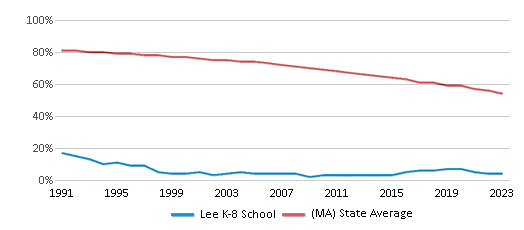
Hawaiian
n/a
n/a
Two or more races
4%
5%
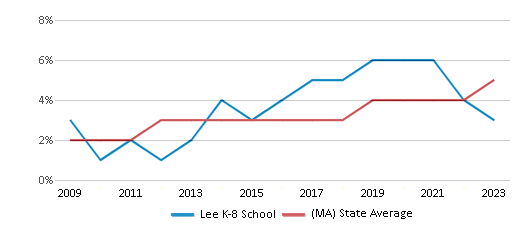
All Ethnic Groups
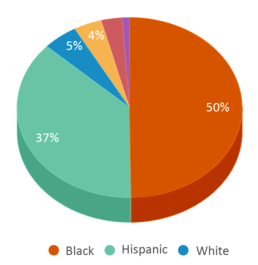
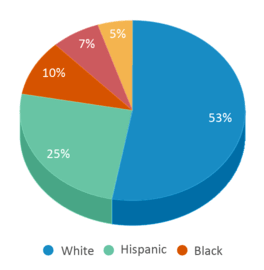
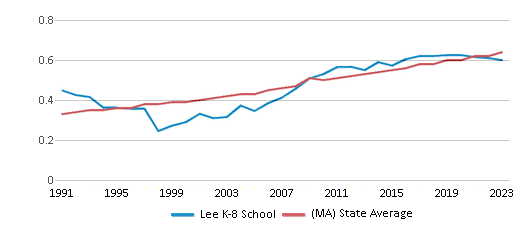
Participates in the National School Lunch Program (NSLP)
Yes
Eligible for Free Lunch
97%
35%
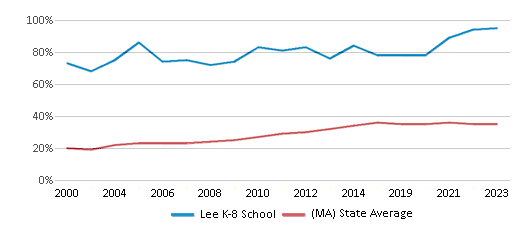
Eligible for Reduced Lunch (13-14)
4%
5%
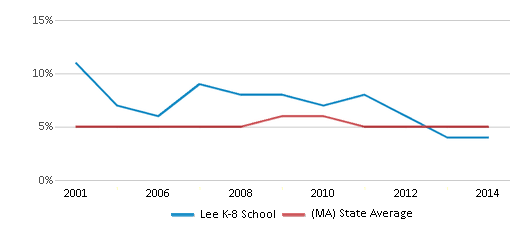
School Statewide Testing
School District Name
Source: National Center for Education Statistics (NCES), MA Dept. of Education
Profile last updated: 02/09/2025
Frequently Asked Questions
What is Lee K-8 School's ranking?
Lee K-8 School is ranked #1628 out of 1,631 schools, which ranks it among the bottom 50% of public schools in Massachusetts.
What percent of students have achieved state testing proficiency in math and reading?
3% of students have achieved math proficiency (compared to the 41% MA state average), while 8% of students have achieved reading proficiency (compared to the 44% MA state average).
How many students attend Lee K-8 School?
527 students attend Lee K-8 School.
What is the racial composition of the student body?
50% of Lee K-8 School students are Black, 37% of students are Hispanic, 5% of students are White, 4% of students are Two or more races, 3% of students are Asian, and 1% of students are American Indian.
What is the student:teacher ratio of Lee K-8 School?
Lee K-8 School has a student ration of 9:1, which is lower than the Massachusetts state average of 12:1.
What grades does Lee K-8 School offer ?
Lee K-8 School offers enrollment in grades Prekindergarten-8 (offers virtual instruction).
What school district is Lee K-8 School part of?
Lee K-8 School is part of Boston School District.
In what neighborhood is Lee K-8 School located?
Lee K-8 School is located in the Dorchester neighborhood of Dorchester Center, MA. There are 5 other public schools located in Dorchester.
School Reviews
5 8/20/2012
i strongly recommend this school because in 2012 september the school will be welcoming new 6th graders for the first time and will keep adding until 8th grade the school will have citizen school for the upper school and have activities for the lower school the kids in this school dont show much volience the school serves free lunch to does with low income this school is a very safe enviorment for all kids from different culture this school doesnt encourage bullying and if one is being bullied they can report it anoynomisly the school teachers are very advanced for the kids and care very much for the kids the joseph lee school is a school to feel welcomed learn new thing make friends talk to your teacher and even the school has conselors for kids with personall problems
Review Lee K-8 School. Reviews should be a few sentences in length. Please include any comments on:
- Quality of academic programs, teachers, and facilities
- Availability of music, art, sports and other extracurricular activities
Recent Articles

What Is A Charter School?
Explore the world of charter schools in this comprehensive guide. Learn about their history, how they operate, and the pros and cons of this educational innovation. Discover key facts about charter schools, including admission policies, demographics, and funding, as well as what to look for when considering a charter school for your child.

10 Reasons Why High School Sports Benefit Students
Discover the 10 compelling reasons why high school sports are beneficial for students. This comprehensive article explores how athletics enhance academic performance, foster personal growth, and develop crucial life skills. From improved fitness and time management to leadership development and community representation, learn why participating in high school sports can be a game-changer for students' overall success and well-being.

February 05, 2025
Understanding the U.S. Department of Education: Structure, Impact, and EvolutionWe explore how the Department of Education shapes American education, from its cabinet-level leadership to its impact on millions of students, written for general audiences seeking clarity on this vital institution.









